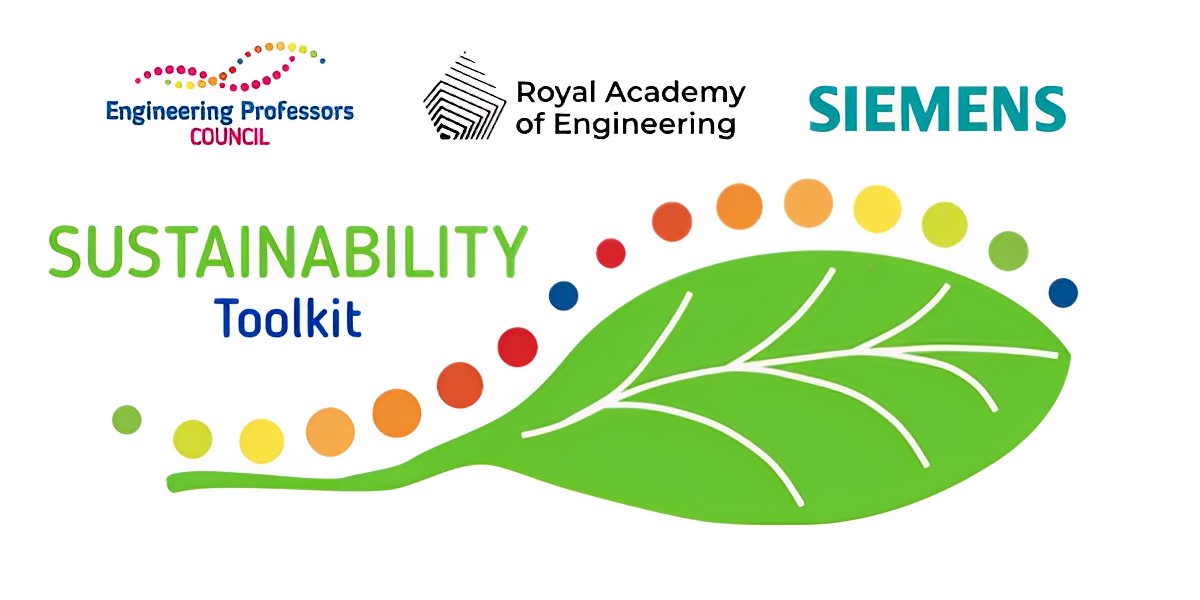Author: Onyekachi Nwafor (CEO, KatexPower).
Topic: Revealing links between ethics and sustainability by teaching with case studies.
Tool type: Guidance.
Relevant disciplines: Any.
Keywords: Sustainability education; Engineering ethics; Environmental impact; Responsible design; Stakeholder engagement; AHEP; Sustainability; Higher education; Pedagogy; Renewable energy; Green energy; Climate change; Local community.
AHEP mapping: This resource addresses two of the themes from the UK’s Accreditation of Higher Education Programmes fourth edition (AHEP4): The Engineer and Society (acknowledging that engineering activity can have a significant societal impact) and Engineering Practice (the practical application of engineering concepts, tools and professional skills). To map this resource to AHEP outcomes specific to a programme under these themes, access AHEP 4 here and navigate to pages 30-31 and 35-37.
Related SDGs: SDG 4 (Quality education); SDG 13 (Climate action).
Who is this article for? This article should be read by educators at all levels in higher education who are seeking to apply an approach of teaching with case studies in order to reveal the links between ethics and sustainability. Engaging with this topic will also help to prepare students with the soft skill sets that employers are looking for.
Supporting resources:
Premise:
As environmental pressures mount, the world demands not just engineering solutions, but sustainable ones. This shift presents profound challenges and opportunities for engineering educators. How can we equip future engineers with the ethical frameworks and critical thinking skills needed to navigate the complex trade-offs inherent in green solutions?
This article provides a guide for integrating ethical considerations into engineering education by using case studies. By fostering awareness of sustainability principles and promoting responsible decision-making through real-world examples, we can empower students to become stewards of a more equitable and resilient future.
The interplay of ethics and sustainability:
At its core, sustainability goes beyond environmental impact. It encompasses social responsibility, economic viability, and intergenerational equity. Ethical engineering aligns with these principles by:
- Prioritising transparency and honesty: Green solutions shouldn’t mask potential downsides or mislead stakeholders.
- Respecting all stakeholders: Engineers must consider the needs and voices of local communities, indigenous populations, and future generations.
- Envisioning long-term consequences: Solutions conceived with short-term gain in mind can have unforeseen environmental and social repercussions.
Integrating ethical considerations into engineering curricula presents several challenges:
- Balancing economic pressures: Sustainable solutions don’t always align with immediate cost-effectiveness. Educators must help students navigate these complex trade-offs and advocate for long-term benefits.
- Fostering interdisciplinary collaboration: Sustainability demands diverse perspectives. Educators can encourage partnerships with ecologists, sociologists, and other experts to enrich student understanding.
- Staying updated with evolving technologies: The sustainability landscape is dynamic. Educators must themselves embrace continuous learning to ensure their curriculum reflects the latest developments and potential ethical dilemmas.
Learning from a case study:
The sprawling Ivanpah Solar Electric Generating System in California’s Mojave Desert, initially celebrated as a beacon of clean energy, now casts a complex shadow on the region’s ecological landscape. While harnessing the sun’s power to electrify millions, its concentrated solar technology inadvertently unleashed unintended consequences. The intense heat generated by the mirrors tragically claimed thousands of birds, particularly desert tortoises, a threatened species. Drawn to the shimmering light, they would collide with the mirrors or structures, falling victim to a technological mirage. This stark reality challenged the “green” label of a project originally intended to combat climate change.
Unforeseen costs of progress:
Ivanpah’s case highlights the hidden costs of even well-intentioned renewable energy projects. It sparks critical questions for students to grapple with:
Sustainability beyond carbon emissions: While reducing carbon footprint is crucial, broader ecosystem impacts must be considered. Can technological advancements mitigate harm to vulnerable species and habitats?
Balancing energy needs with ecological needs: How can we find the sweet spot between harnessing renewable energy and preserving biodiversity? Can alternative technologies or site selection minimise ecological disruption?
Engaging stakeholders in ethical decision-making: How can local communities and ecological experts be meaningfully included in planning and mitigation strategies to ensure equitable outcomes?
By delving into the Ivanpah case (and others like it*), students can develop critical thinking skills to analyse the long-term implications of seemingly green solutions. They learn to consider diverse perspectives, advocate for responsible design practices, and prioritise environmental stewardship alongside energy production.
*Relevant case studies:
Empowering future engineers:
As educators, we hold the power to shape the ethical compass of future engineers. By integrating ethical considerations into the fabric of our curriculum, we can equip them with the tools and knowledge necessary to:
- Make informed decisions: Students should learn to analyse solutions through the lens of ethics, considering environmental impact, social responsibility, and economic viability.
- Engage in open dialogue: Cultivating a culture of critical thinking and open communication is crucial for addressing diverse perspectives and mitigating potential ethical concerns.
- Collaborate ethically: Students should understand the importance of interdisciplinary collaboration, respecting diverse expertise and working towards shared goals that benefit all stakeholders.
Conclusion:
The pursuit of a sustainable future demands ethical engineers, engineers who can not only innovate, but also act with integrity and responsibility. By equipping students with the knowledge and skills necessary to grapple with complex ethical dilemmas, we can empower them to become transformative agents of change, shaping a world that thrives for generations to come.
References:
Delong, D. (2012). ‘Sustainable engineering: A comprehensive introduction’. John Wiley & Sons.
Engineering ethics toolkit (2022) Engineering Professors Council. (Accessed: 05 February 2024).
Engineers Without Borders. (n.d.). ‘Case studies on ethical dilemmas in sustainability’.(Accessed: October 20, 2023).
MacKay, D.J.C. (2008). ‘Sustainable Energy – Without the Hot Air’. UIT Cambridge Ltd.
Pritchard, M. S et al. (2013). ‘Engineering Ethics: Challenges and Opportunities’. Morgan & Claypool Publishers.
Vallero, D. (2013). ‘The Ethics of Sustainable Engineering’. Princeton University Press.
This work is licensed under a Creative Commons Attribution-ShareAlike 4.0 International License.
Any views, thoughts, and opinions expressed herein are solely that of the author(s) and do not necessarily reflect the views, opinions, policies, or position of the Engineering Professors’ Council or the Toolkit sponsors and supporters.
To view a plain text version of this resource, click here to download the PDF.





